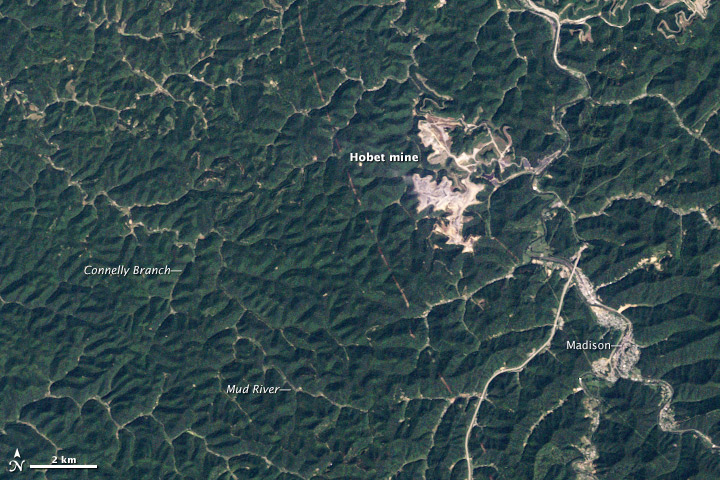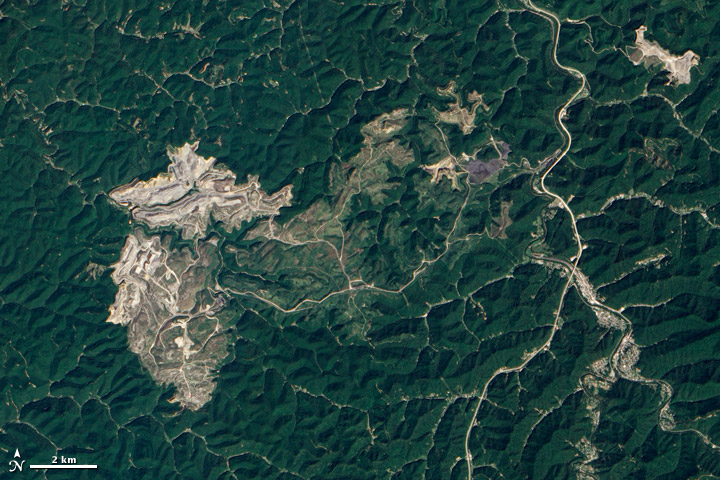Externalities are the costs that are not incurred by coal mining operations, hydraulic fracturing (fracking), and oil sands extraction. Aside from the fossil fuel emissions from the burning of coal, oil, and natural gas for power generation, the extraction process bears huge costs that most of us are willing to overlook for the short-term economic benefits. If you happen to be in the vicinity of a mine, however, you probably are paying close attention to everything the company in charge is doing. One impact is land-use, and unfortunately for companies tearing into relatively remote regions of the Earth to feed our massive hunger to consume, NASA has some excellent Earth observing satellites. Satellites have been high above Earth since the 1970s and this is one image of a region in West Virginia, USA in 1984  with another image of the same region in 2012
with another image of the same region in 2012  What do scientists do with this kind of imagery? Well, here is a the link to an amazingly clear image-animation of the process of removing a mountaintop in Appalachia (West Virginia, in this case) to uncover the coal. Related to the documentation of the mountaintop removal, is an image-animation of the land-use associated with the tar sands/oil sands extraction from Alberta’s boreal forest. Fracking doesn’t have as long a record, so NASA imagery doesn’t capture the results of this form of land-use. But states in the USA (including North Carolina) are lining up legislation to begin issuing permits for fracking. Proponents cite job creation and reduced greenhouse gas emissions (noting an important caveat to the 2nd point). Critics cite major concerns about just how long those economic gains will keep rolling in before locals are left with an environmental mess to clean up without help from the deep industrial pockets that created the mess.
What do scientists do with this kind of imagery? Well, here is a the link to an amazingly clear image-animation of the process of removing a mountaintop in Appalachia (West Virginia, in this case) to uncover the coal. Related to the documentation of the mountaintop removal, is an image-animation of the land-use associated with the tar sands/oil sands extraction from Alberta’s boreal forest. Fracking doesn’t have as long a record, so NASA imagery doesn’t capture the results of this form of land-use. But states in the USA (including North Carolina) are lining up legislation to begin issuing permits for fracking. Proponents cite job creation and reduced greenhouse gas emissions (noting an important caveat to the 2nd point). Critics cite major concerns about just how long those economic gains will keep rolling in before locals are left with an environmental mess to clean up without help from the deep industrial pockets that created the mess.
Land use in action
Categories: Earth System Observer